Abstract
Acetylcholine, in the presence of atropine, has an action like that of sympathetic stimulation. When injected into the splenic artery it causes contraction of the spleen, but this action is blocked by hexamethonium; stimulation of the splenic nerves, however, is still effective. Thus hexamethonium distinguishes between sympathetic nerve stimulation and the action of acetylcholine. If bretylium is used instead of hexamethonium, there is no such distinction, for bretylium blocks the response to nerve stimulation as well as that to acetylcholine. It appeared that hexamethonium might block the action of acetylcholine by preventing its entry into the sympathetic fibre. Acetylcholine has some structural similarity to bretylium, since acetylcholine is a derivative of trimethylammonium and bretylium is a derivative of dimethylethylammonium. It has been found that hexamethonium, pentolinium and hemicholinium (HC-3), which are all bis-quaternary compounds, block the action of bretylium, presumably by preventing its entry into the fibre. Consistent with the view that ability to enter the fibre is important is the observation that mecamylamine and pempidine, which are ganglion-blocking agents, but not either mono- or bis-quaternary compounds, often abolish the response to stimulation of the sympathetic postganglionic fibre.
Full text
PDF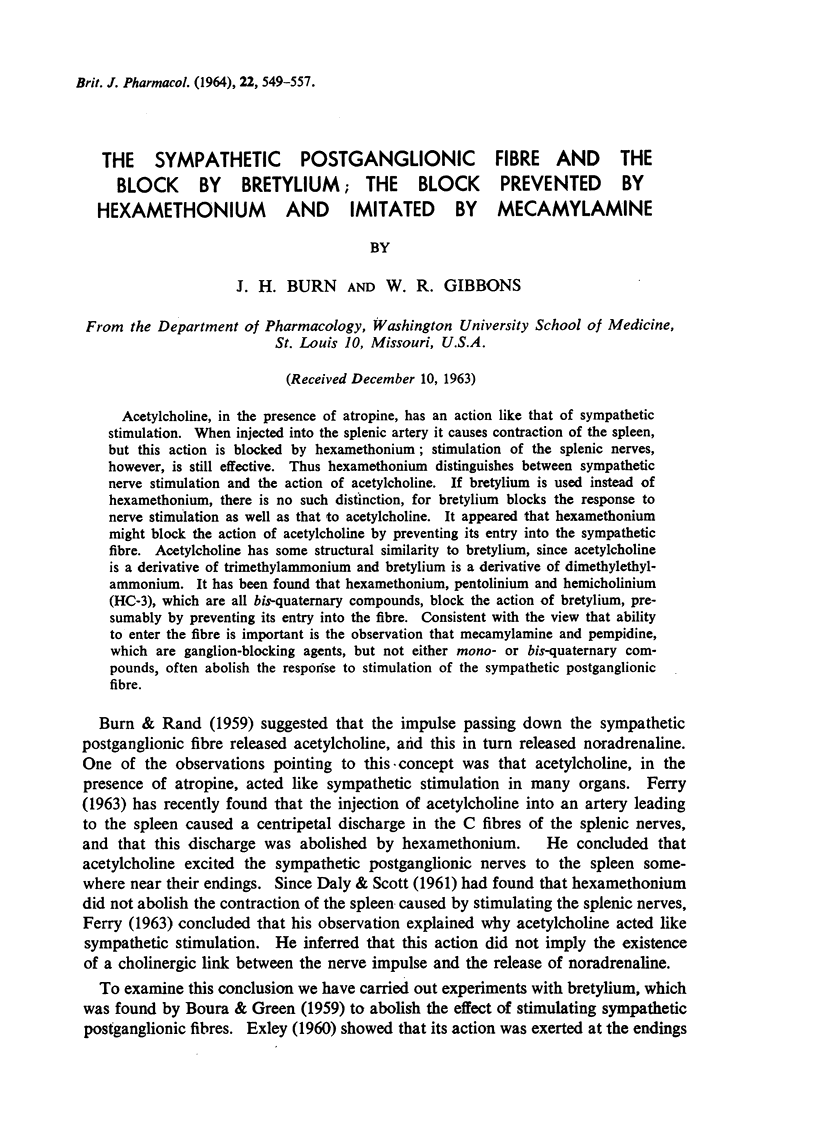
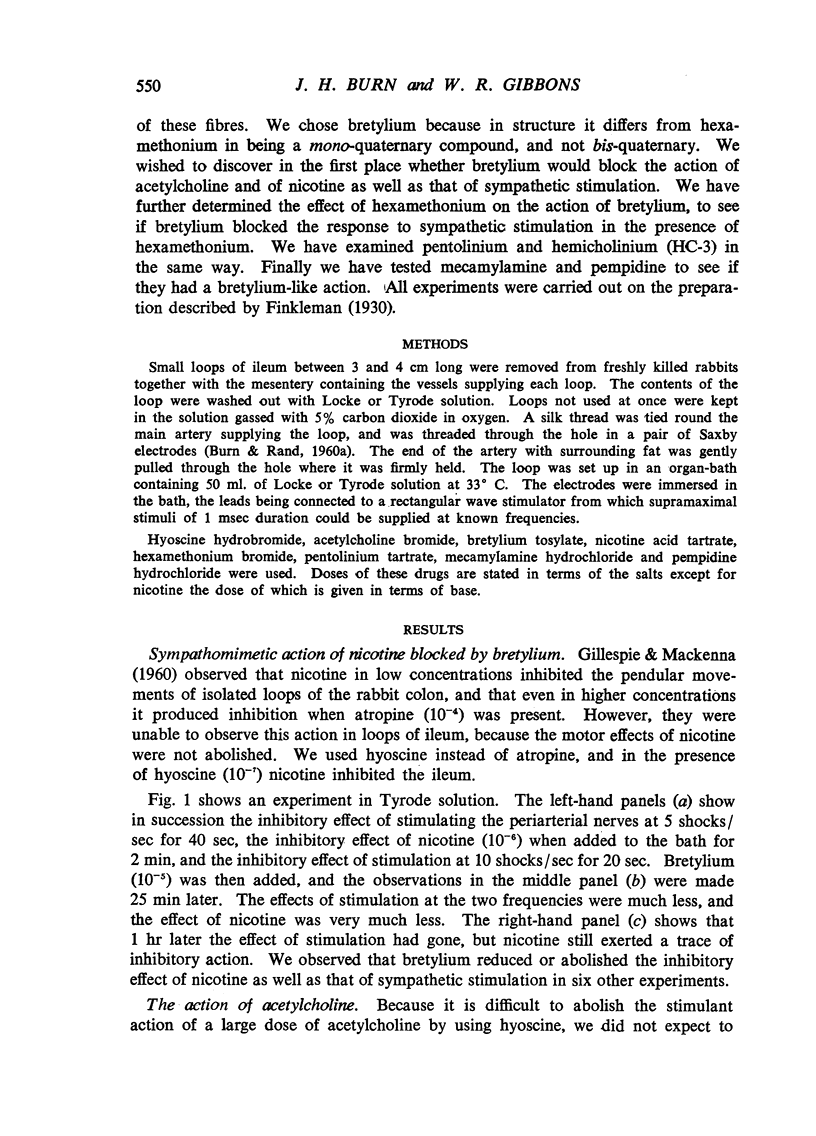
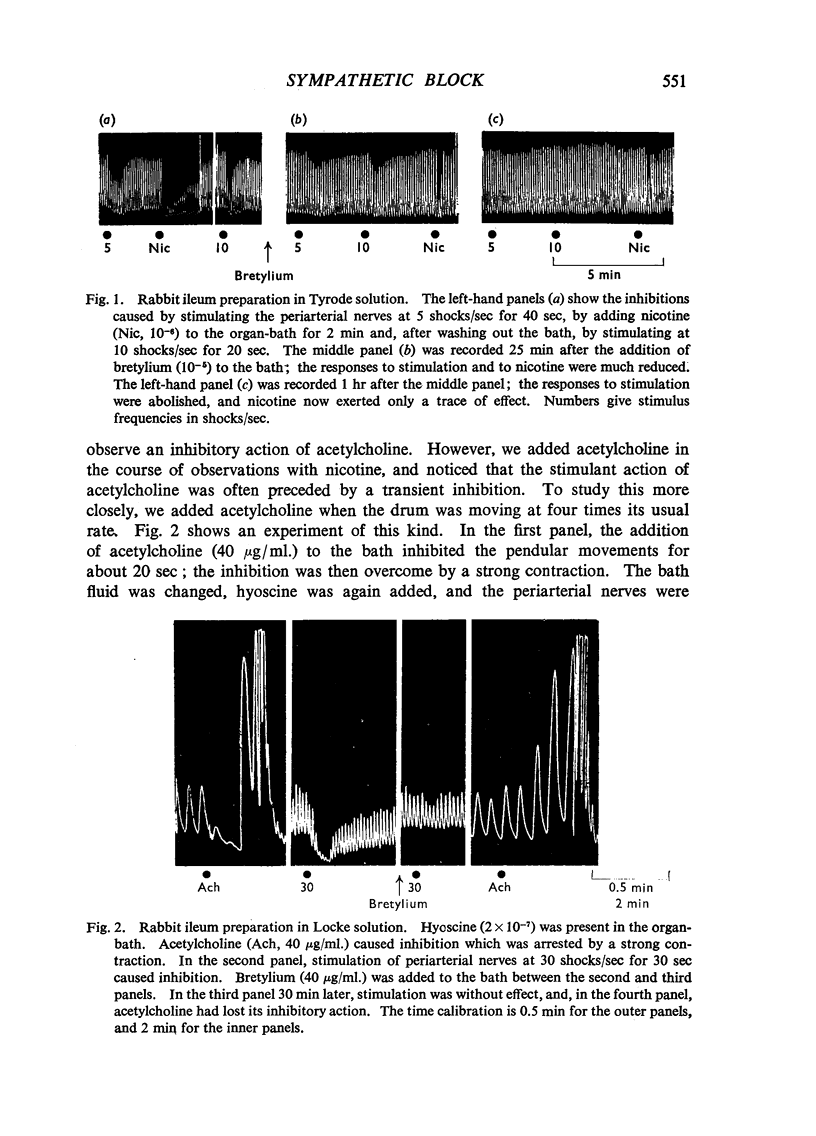
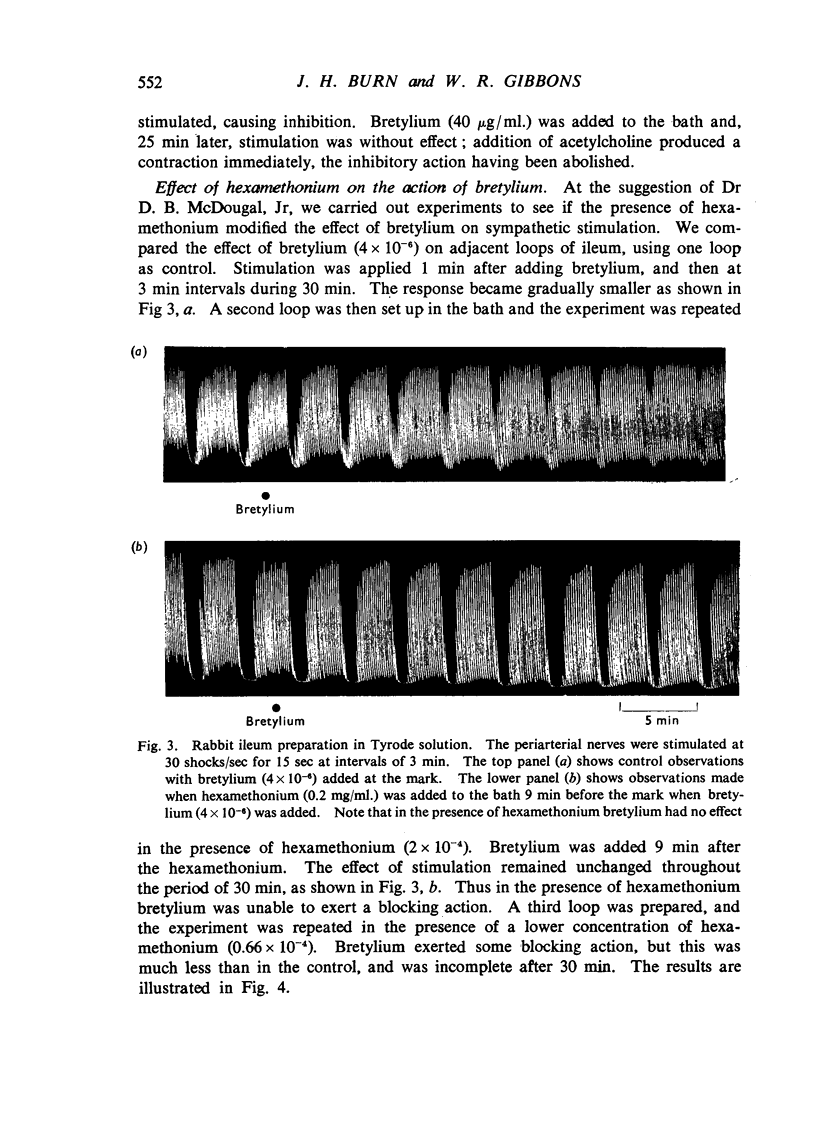
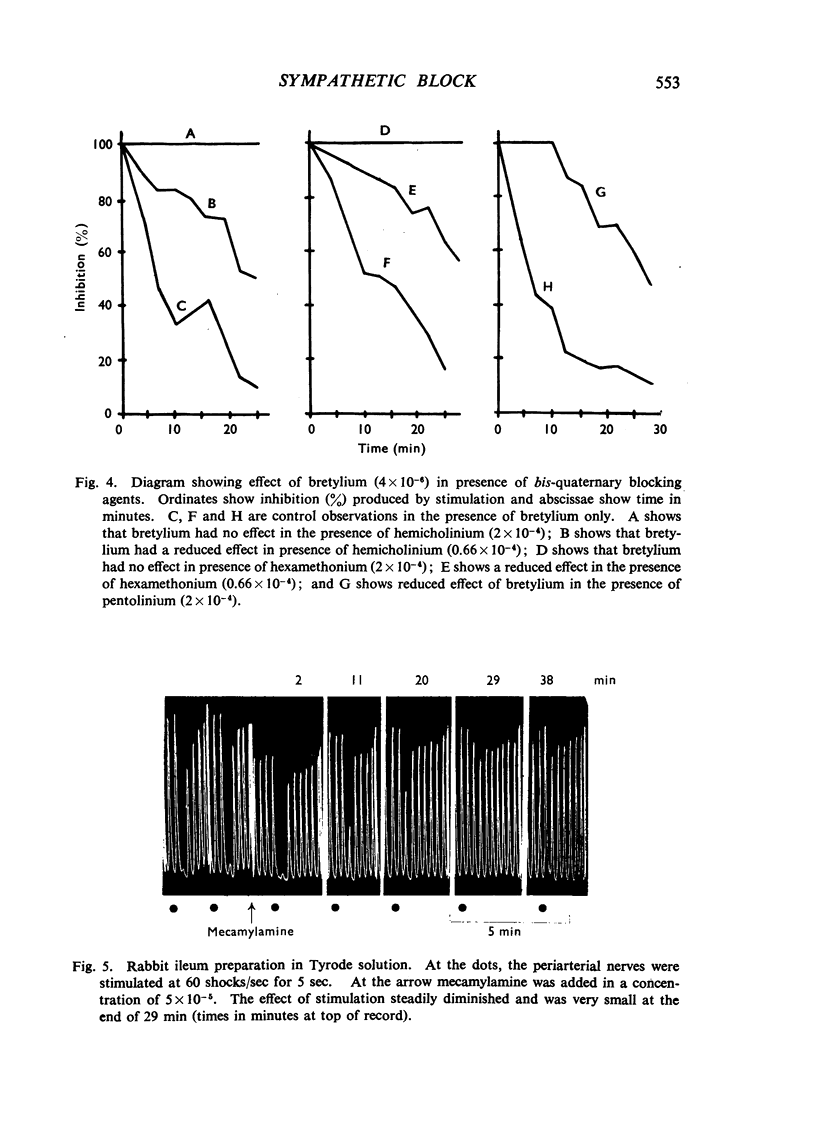
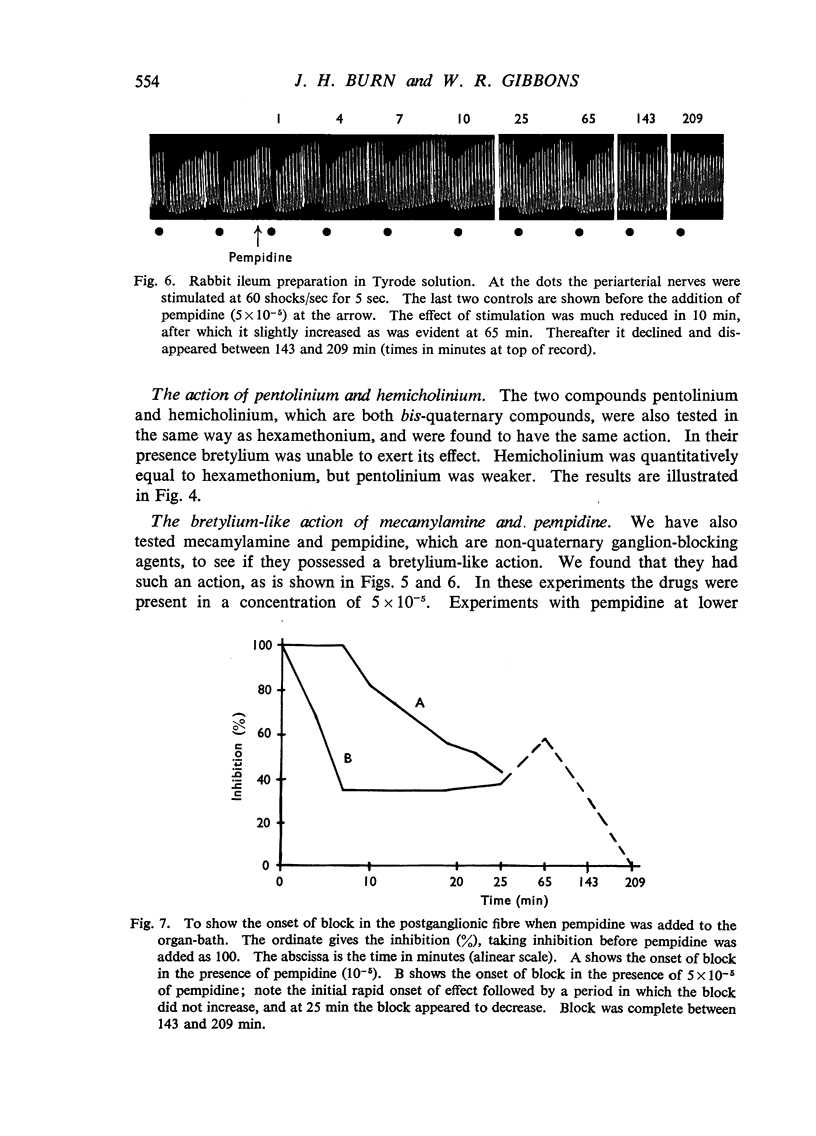
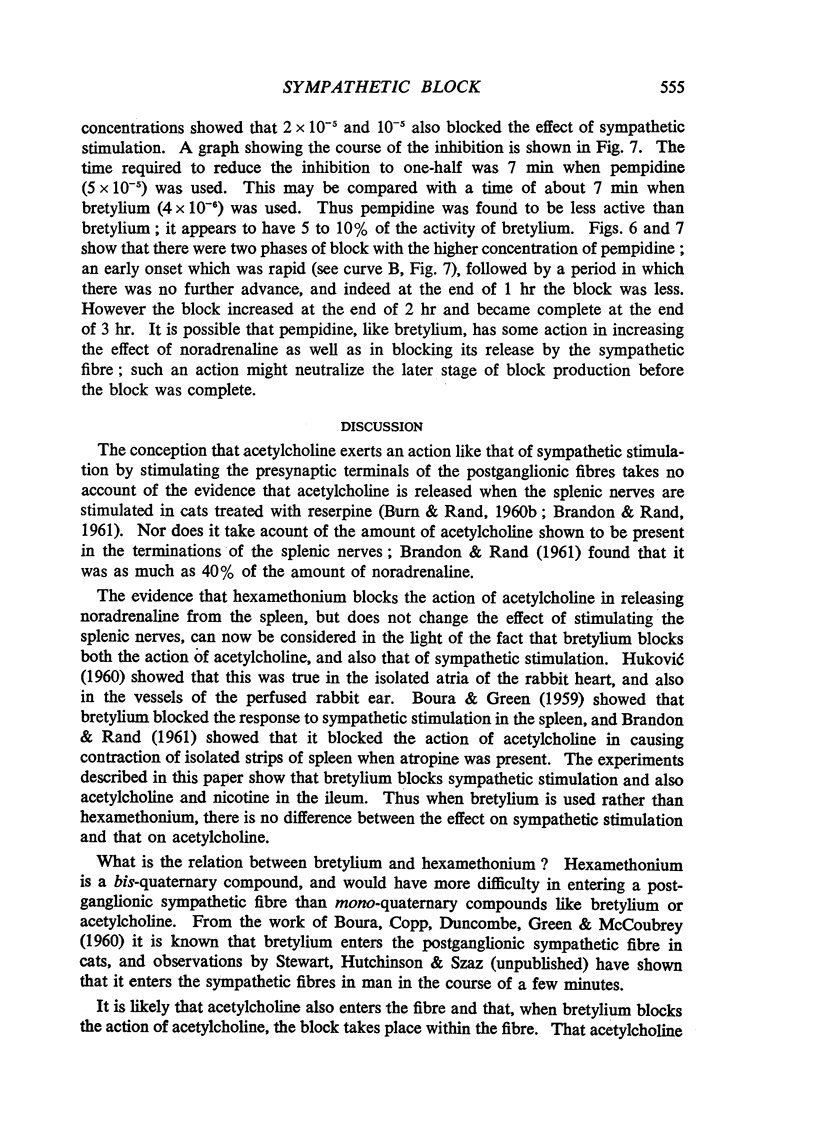
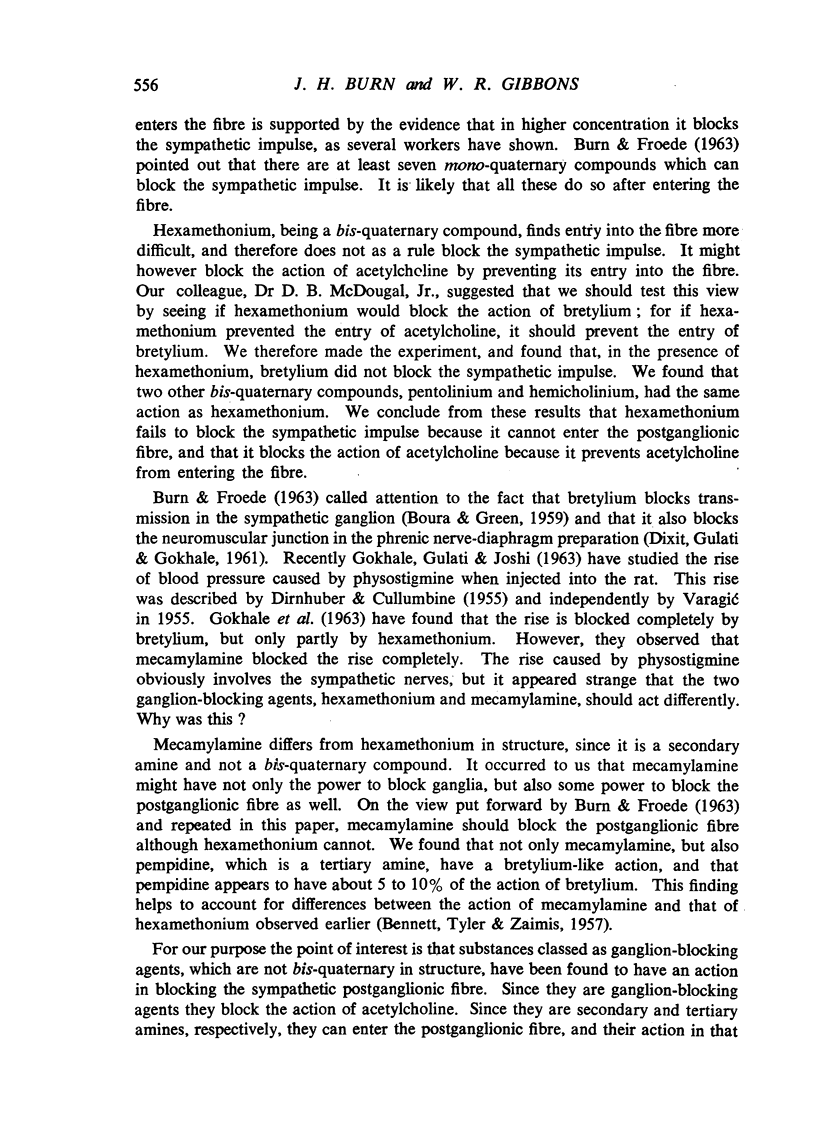
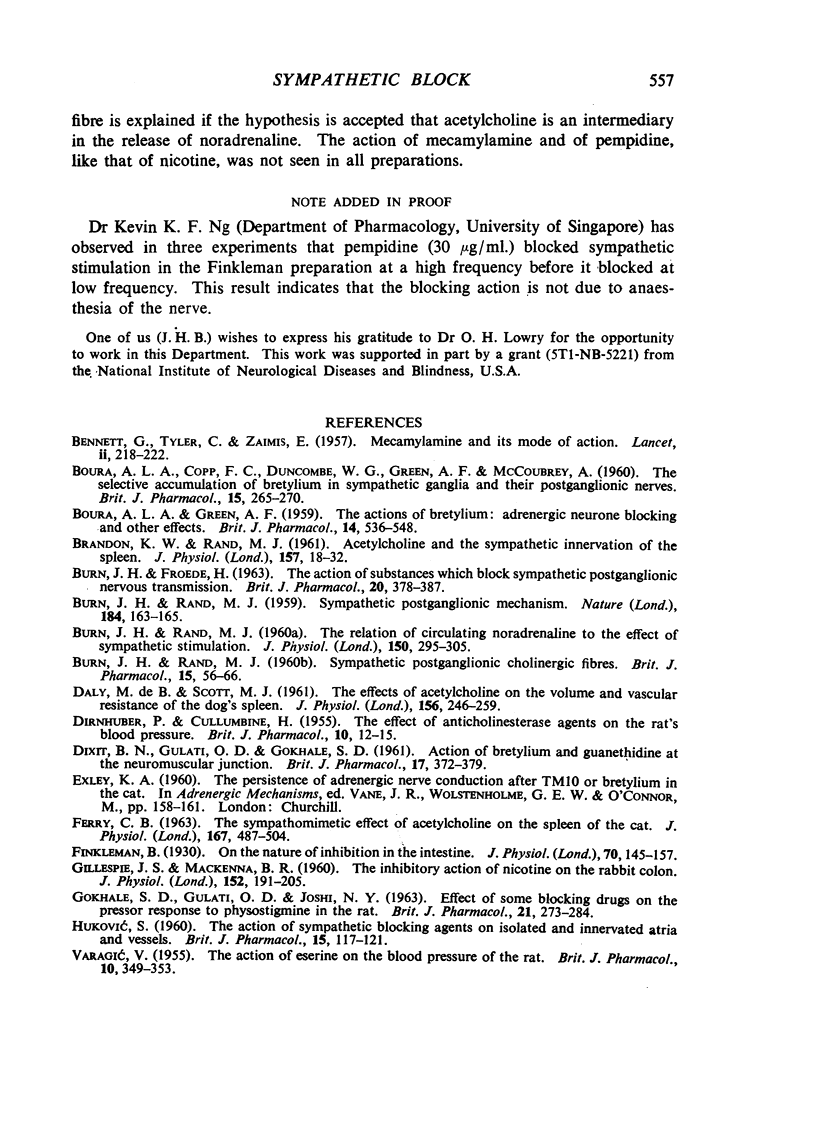
Selected References
These references are in PubMed. This may not be the complete list of references from this article.
- BENNETT G., TYLER C., ZAIMIS E. Mecamylamine and its mode of action. Lancet. 1957 Aug 3;273(6988):218–222. doi: 10.1016/s0140-6736(57)91598-2. [DOI] [PubMed] [Google Scholar]
- BOURA A. L., COPP F. C., DUNCOMBE W. G., GREEN A. F., McCOUBREY A. The selective accumulation of bretylium in sympathetic ganglia and their postganglionic nerves. Br J Pharmacol Chemother. 1960 Jun;15:265–270. doi: 10.1111/j.1476-5381.1960.tb01242.x. [DOI] [PMC free article] [PubMed] [Google Scholar]
- BOURA A. L., GREEN A. F. The actions of bretylium: adrenergic neurone blocking and other effects. Br J Pharmacol Chemother. 1959 Dec;14:536–548. doi: 10.1111/j.1476-5381.1959.tb00961.x. [DOI] [PMC free article] [PubMed] [Google Scholar]
- BURN J. H., FROEDE H. The action of substances which block sympathetic postganglionic nervous transmission. Br J Pharmacol Chemother. 1963 Apr;20:378–387. doi: 10.1111/j.1476-5381.1963.tb01476.x. [DOI] [PMC free article] [PubMed] [Google Scholar]
- BURN J. H., RAND M. J. Sympathetic postganglionic cholinergic fibres. Br J Pharmacol Chemother. 1960 Mar;15:56–66. doi: 10.1111/j.1476-5381.1960.tb01210.x. [DOI] [PMC free article] [PubMed] [Google Scholar]
- BURN J. H., RAND M. J. The relation of circulating noradrenaline to the effect of sympathetic stimulation. J Physiol. 1960 Feb;150:295–305. doi: 10.1113/jphysiol.1960.sp006388. [DOI] [PMC free article] [PubMed] [Google Scholar]
- Brandon K. W., Rand M. J. Acetylcholine and the sympathetic innervation of the spleen. J Physiol. 1961 Jun;157(1):18–32. doi: 10.1113/jphysiol.1961.sp006702. [DOI] [PMC free article] [PubMed] [Google Scholar]
- DALY M. D., SCOTT M. J. The effects of acetylcholine on the volume and vascular resistance of the dog's spleen. J Physiol. 1961 Apr;156:246–259. doi: 10.1113/jphysiol.1961.sp006673. [DOI] [PMC free article] [PubMed] [Google Scholar]
- DIRNHUBER P., CULLUMBINE H. The effect of anti-cholinesterase agents on the rat's blood pressure. Br J Pharmacol Chemother. 1955 Mar;10(1):12–15. doi: 10.1111/j.1476-5381.1955.tb00052.x. [DOI] [PMC free article] [PubMed] [Google Scholar]
- DIXIT B. N., GULATI O. D., GOKHALE S. D. Action of bretylium and guanethidine at the neuromuscular junction. Br J Pharmacol Chemother. 1961 Dec;17:372–379. doi: 10.1111/j.1476-5381.1961.tb01123.x. [DOI] [PMC free article] [PubMed] [Google Scholar]
- FERRY C. B. The synpathomimetic effect of acetylcholine on the spleen of the cat. J Physiol. 1963 Jul;167:487–504. doi: 10.1113/jphysiol.1963.sp007164. [DOI] [PMC free article] [PubMed] [Google Scholar]
- Finkleman B. On the nature of inhibition in the intestine. J Physiol. 1930 Sep 18;70(2):145–157. doi: 10.1113/jphysiol.1930.sp002683. [DOI] [PMC free article] [PubMed] [Google Scholar]
- GILLESPIE J. S., MACKENNA B. R. The inhibitory action of nicotine on the rabbit colon. J Physiol. 1960 Jul;152:191–205. doi: 10.1113/jphysiol.1960.sp006481. [DOI] [PMC free article] [PubMed] [Google Scholar]
- GOKHALE S. D., GULATI O. D., JOSHI N. Y. EFFECT OF SOME BLOCKING DRUGS ON THE PRESSOR RESPONSE TO PHYSOSTIGMINE IN THE RAT. Br J Pharmacol Chemother. 1963 Oct;21:273–284. doi: 10.1111/j.1476-5381.1963.tb01526.x. [DOI] [PMC free article] [PubMed] [Google Scholar]


